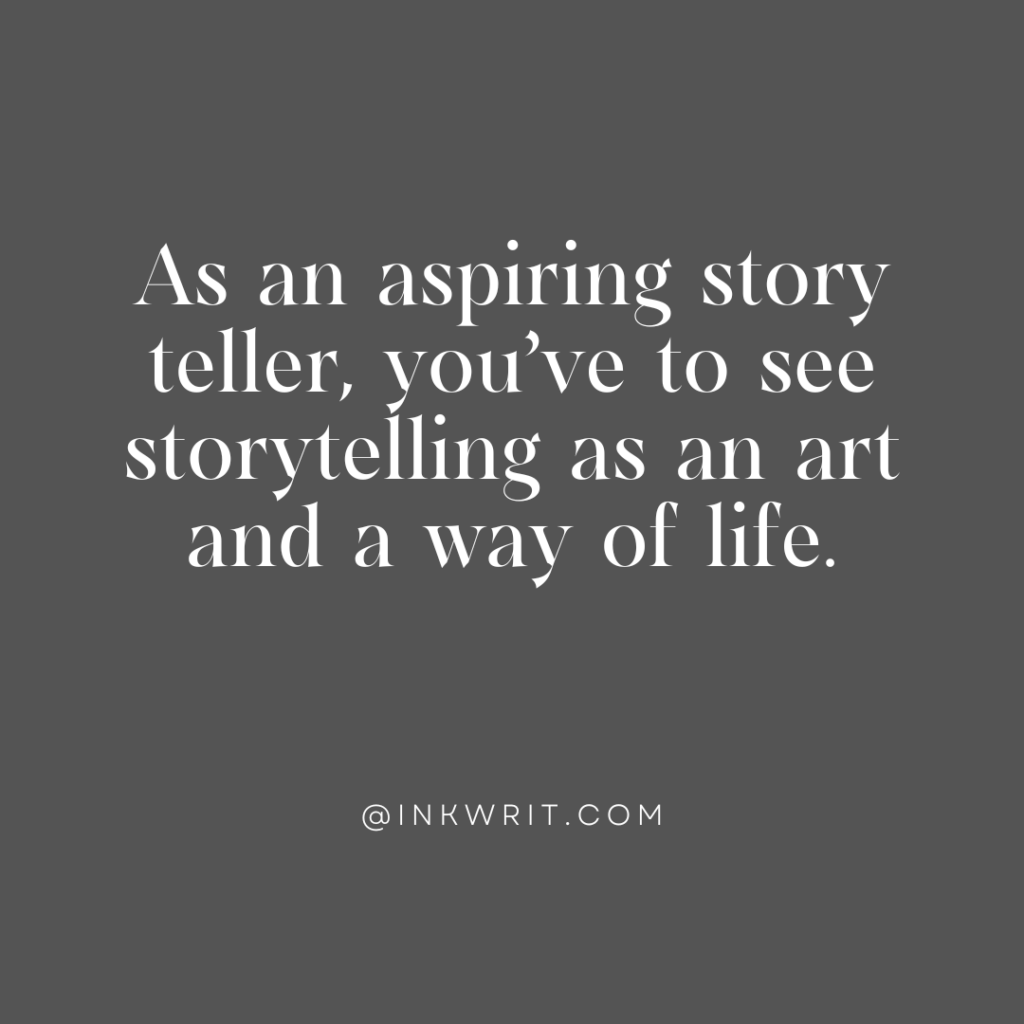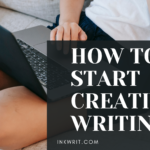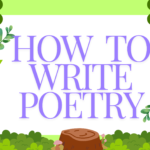How to be good at telling stories
One of my childhood memories are of stories told to me by my father. In the early days storytelling was the way of life, and this is why I agree with the citation below.
After the evening meal, the members of the family gathered on a porch and if there is moonlight, the younger members, gather in the courtyard to play games like hide and seek.
On the porch the entertainment begins with riddles. What dines with an Oba, (paramount chief of a community) and leave him to clear the dishes? A fly. What passes before the Oba’s palace without making obeisance? Rain flood. On its way to Oyo its face is towards Oyo, on its way from Oyo its face is still towards Oyo. What is it? A double-faced drum. After a few riddles the tales begin…. (Owomoyela 264-265)
The act of storytelling is an ancient practice. Before its digitalization our ancestors used stories (fables) as a medium to entertain, instruct, inform, educate and groom a better society.
Storytelling has played and it’s still playing a pivotal role in shaping the society.
In this article as an aspiring storyteller, you’ll discover:
- Brief history of storytelling
- Evolution of storytelling
- Who’s a storyteller?
- How to be good at telling stories.
Let’s dive in…..

History of Storytelling
According to Journal of Africa literature, Storytelling as the product of human development started when civilization began to make progress in interaction and thoughts about terrestrial and celestial existence.
It evolved from the need to transfer values, norms, history, songs, poems et cetera, from memory to memory as there was no means of written records of human events. This was before the emergence of the art of symbolic representation which came before writing.
Storytelling was useful for the storage of norms and values in its own time. Human memory was a good reservoir of experiences where they could easily be recalled, expressed or acted.
Of course human memory has its own disadvantage, that is, when the person who is the reservoir dies, the reserve itself dies with him. Human civilization realized this early enough and thus started the transfer of such storage from human memory to human memory through varying modes of expression, sometimes accompanied with songs.
This is storytelling or folktale, the process of which has helped man’s developmental process in recent times.
Evolution of storytelling
Before writing was invented, humans shared stories orally almost since the time we became Homo sapiens. From the brief history, the oral transmission of stories had a disadvantage. Stories died when the person who is the reservoir dies.
In the advent of technology, this disadvantage was taken care of. Stories became preserved in print and in digital forms.
From books to radio, television to film, and now stories have found, their way into the internet and social media.
Through digital platforms, storytelling has never been easier. Anyone with a smartphone and an internet connection can now share their stories with a global audience.
Who’s a storyteller?
A storyteller is someone who writes or tells stories. The storyteller is a developer who utilizes the values in storytelling as moral blocks to build human minds for present and future advancement.
With the invention of writing and technology, storytelling took on new forms. Storytellers could tell stories in texts and in digital forms that preserved them for posterity.
In addition to this, a storyteller can tell stories either in visual or performing acts, this includes theater, stand-up comedy, or spoken word poetry.

As an aspiring storyteller, to excel you’ve to see storytelling as an art and a way of life. Thus you’ve to be able to capture your reader with the right settings of your story, create compelling characters that your reader will root for and most importantly bring in conflicts and resolution that will spur your reader’s imagination.
It’s no doubt that aspiring storytellers can see storytelling as challenging but you don’t have to worry, because I had a brief interview session with Asma, a renowned storyteller, who write stories to connect, inspire and drive sales for coaches, writers, and educators.
In this interview she listed tips that will open you up to the act of telling great stories.
How to be good at telling stories (Interview Session)
What do you believe are the fundamental elements that contribute to being good at telling stories?
As per my experience, these are the 4 key elements;
Observation – Research to fill up your reservoir of knowledge. Meet people (online + offline), engage in conversations, dig deeper into online forums, groups, and listen to podcasts. Study nonverbal cues too.
Reflection – Allow your mind to create links. You’ve got all the information, now it’s time to let it simmer. Spend some time in nature.
Assimilation – At this step, you pick the isolated events & put them together to create a complete picture. You give meaning by building a narrative.
Writing/Speaking – The story is ready but how you express it, makes all the difference. Learn ‘strategic expression’. It’s the art of showcasing the story in a meaningful manner. Observe master storytellers & take notes.
Can you share some techniques or strategies you’ve found effective in captivating an audience’s attention when telling a story?
Begin with a single moment – An isolated moment that instantly pulls in the reader.
Keep it very simple/relatable – The more mental energy they burn to understand… the more alienated they’ll feel.
Use visual imagery – The audience must ‘feel’ as if they’re in the story. Put 5 senses at play. But do this seamlessly. Don’t overdo it.
Add captivating dialogues. Make your characters express themselves naturally.
Tie your unique experiences with a universal thread – Empathy, Honesty, Resilience, Hope, Compassion, etc… Every story must work around one of these universal appeals.
How important do you think it is for storytellers to understand the structure and pacing of narratives, and how do you approach these aspects in your own storytelling?
Both are extremely important.
Structure – Play with sequences. Flashbacks, future pacing, momentary hits. Don’t be rigid. The story must feel like a ‘real life experience’. Not like some perfect words dropped to make sense. It’s all about the ‘feel’.
Pacing – Follow the flow of events, not the footprints of some rigid frameworks. Breathe, Run, Stop, and Restart as required. The rhythm & pacing of the story revolves around the scenes. Vary the length & structure of sentences to keep the audience engaged.
What role does empathy play in effective storytelling, and how do you incorporate it into your storytelling process?
Empathy breeds positivity. And every story must strive to radiate positive vibes no matter how gloomy it might be.
These key points must be kept in mind;
Select the words with extra caution.
Show the light at the end of the tunnel.
No fancy appeal. Reach out at a human level.
NEVER put yourself on a high pedestal making your audience feel inferior in any way.
Can you discuss the importance of authenticity in storytelling and share how you maintain authenticity in your own narratives?
Authenticity is the soul of a story. Take it away & it’ll lose all the impact.
Here’s how I infuse authenticity in my stories;
Setting up a simple…relatable scenario.
Being vulnerable.
Showing true feelings, not the hard-core facts.
Wrapping up with a subtle disclaimer towards the end.
When you do this, you place the audience in a position of power & foster deeper connections.
How do you tailor your storytelling approach to different audiences or contexts, and what considerations do you take into account?
Research & reflection serve as the key to unlock diverse audience’s perspectives. It’s not about mimicking their voice. We must be ‘the voice they crave to hear.’
Here’s my candid roadmap that works for every type of audience;
Approach with an element of shock – This is the opening of the story.
Scoop down to their level to build a connection – Sprinkle some relatable scenes.
Mirror their pain points as your sore spots – Show the characters in the trenches, highlighting how they ‘feel’.
Stand in the light to demonstrate the solution – Show them the journey towards the solution.
End with a food for thought & let them decide – Once you’ve played your part it’s best to invite the audience in the position of power. No hard press lessons/solutions. Ask them how they feel & what would be their next step.
What advice would you give to storytellers who struggle with confidence or stage presence when sharing their stories?
Be the light, not the lamp. Your job is to illuminate their path but don’t feel burdened to act as a constant…flawless source of support. Your quirks are your power to connect. Speak with your heart but try to keep your thoughts organized. Try to read the expressions of the audience (verbal + nonverbal cues) & adjust your tone accordingly. When we approach storytelling as a two-way communication, it becomes pure bliss.
How do you handle unexpected challenges or interruptions while telling a story, and what strategies do you employ to maintain engagement?
Humor helps to light up such unexpected shots for me.
We can;
Tell a relatable joke.
Reply with a close-ended meaningful sentence.
Celebrate the quirks.
Follow plan B. (Conversation with the audience. Open up the chat/comment box.)
As I said earlier it’s a two-way communication. You’re not there to shape their perception, just try to open up the ‘tiny window of reflections’.
Our job as storytellers is to trigger the right emotions. Appreciate the diverse responses.
Can you share any exercises or practices that aspiring storytellers can use to improve their storytelling skills?
I feel sometimes we try too hard to tell a story. This practice kills the joy of creation & results in a dry, flaky… pushy story.
I engage in some simple exercises to sharpen my skills.
Do these religiously;
Study…dissect the best stories & create your own blueprints.
Learn how to write meaningful dialogues.
Visualize yourself in those moments, feel it then write it.
Write your stories & share them with others. See what works & reiterate.
Don’t be afraid to experiment. Try different tones, structures & voices. Enjoy the process & let your thoughts flow. Be a lifelong student of storytelling & keep upgrading your skill with modern practices.
In your experience, what distinguishes a good storyteller from a great one, and what steps can storytellers take to continually refine and enhance their craft?
We must find a delicate balance of expression. Our words create a ripple of thoughts in the minds of the audience but we somehow control the flow of the narrative.
Being overly dramatic or hyper-emotional steals away authenticity. Always keep it simple…realistic…natural.
Don’t be a storyteller just because it’s a buzzword or maybe to earn big bucks.
Fall in love with this craft & then use it to fuel your purpose in life.
Great storytellers speak less but say wayyyyy more.
We paint a perspective with the brush of brevity. And this is why our stories connect, inspire & convert.
Happy storytelling!
Let’s wrap up
Storytelling is an ancient art that continues to thrive in the modern world. By understanding its history, embracing its evolution, and mastering its techniques, anyone can become a good storyteller. So, go forth, unleash your imagination, and let your stories captivate the world. Above all I wish you the best.



